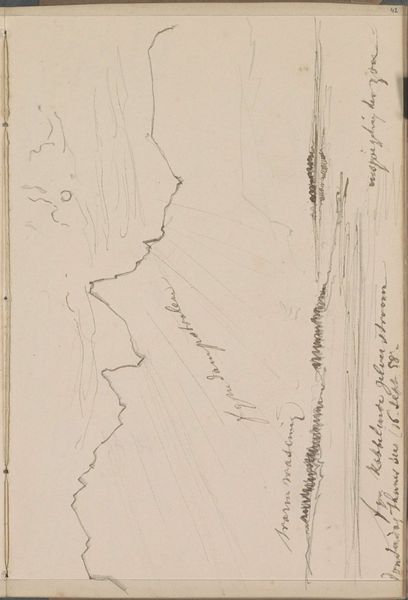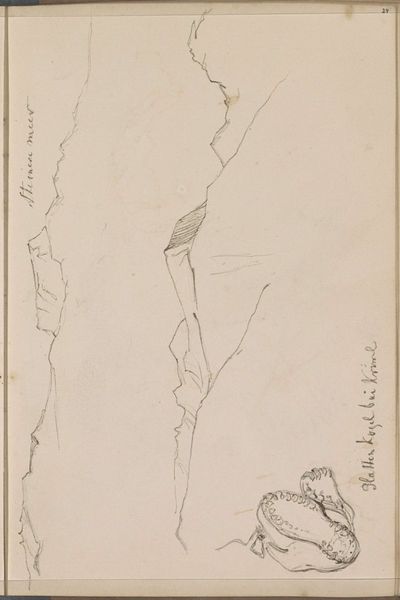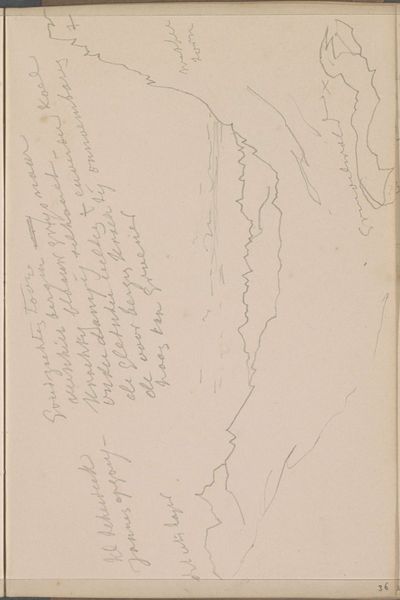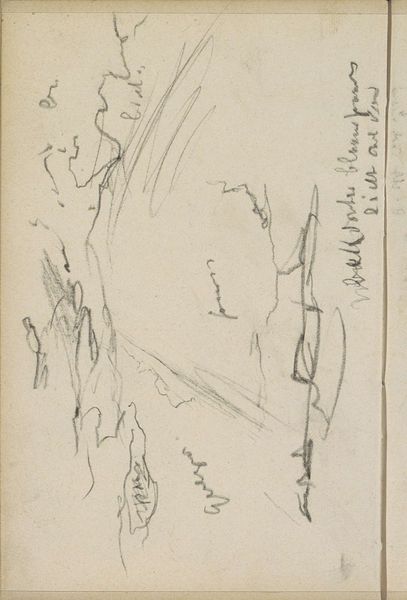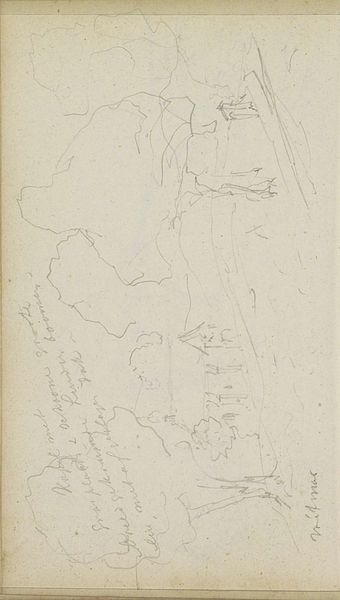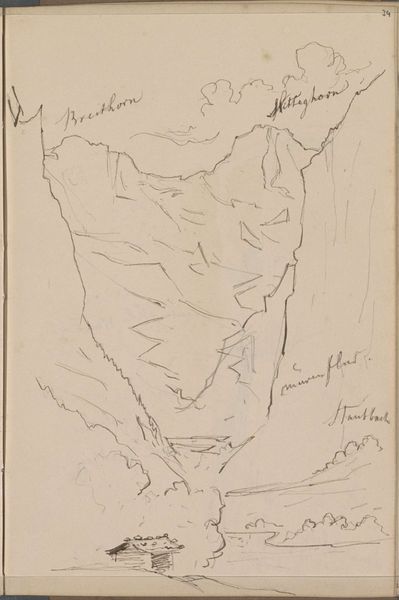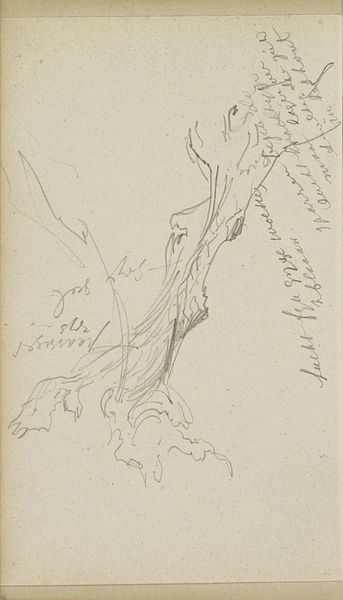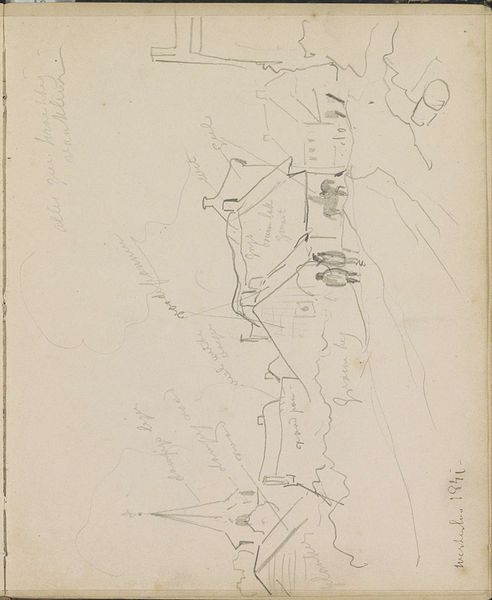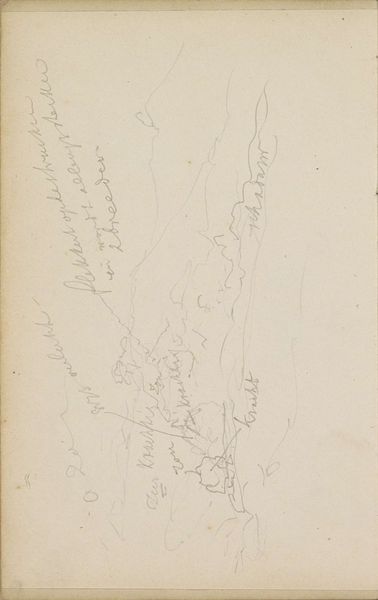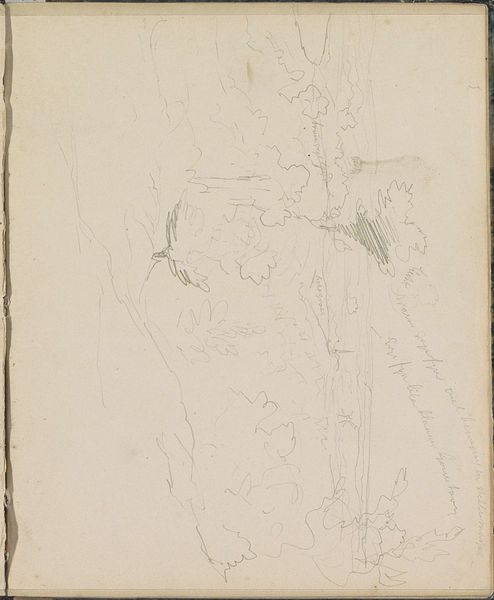
drawing, paper, pencil, graphite
#
drawing
#
landscape
#
paper
#
pencil
#
graphite
Copyright: Rijks Museum: Open Domain
Editor: This is Johannes Tavenraat's "Kleine Scheidegg," a graphite and pencil drawing on paper from possibly 1858 or 1859. It's currently housed at the Rijksmuseum. I'm struck by its almost unfinished quality; it feels more like a fleeting impression than a complete landscape. What historical context should we consider when we look at a sketch like this? Curator: Well, consider the rise of tourism in the 19th century, especially in the Alps. Sketches like this became quite popular souvenirs, documenting personal experiences. However, this artwork does more than depict. Who did it depict *for*? Tavenraat would have understood his sketch’s role as visual document but perhaps more significantly he was able to use such works to reflect the political nature of landscape imagery at a time when Switzerland was forming a concrete national identity. Did the growth of accessible images like these drawings shape cultural values by making the idea of "Switzerland" and the Swiss Alps newly commonplace? Editor: So, beyond being a pretty picture, it played a role in how people *thought* about Switzerland? Was Tavenraat conscious of this political aspect? Curator: Hard to say definitively. But artists, whether consciously or not, participate in broader cultural conversations. How does one make artwork in such a monumental setting and stay removed from all of the potential themes present within it? The sketch itself shows the beginnings of a national identity for the location – do we know what specific aspects of Switzerland would need promoting or celebrating to ensure it continued towards unity as a location? Editor: So it's less about the artist's intent and more about the image's impact on shaping perceptions? It's fascinating to consider art's quiet political influence. Curator: Exactly. The politics of imagery are not just confined to overtly political art. It is very difficult to say that anyone in a position of power within an active community could be excused for accidentally adding or removing something from the national landscape within this image. How it portrays the nation, shapes our collective understanding, what parts it emphasizes, and even what it leaves out. Editor: I never thought a simple sketch could be so politically charged! Thank you for opening my eyes to that. Curator: My pleasure. Considering art as a product of its socio-political environment allows us to engage with it in much more meaningful ways.
Comments
No comments
Be the first to comment and join the conversation on the ultimate creative platform.


